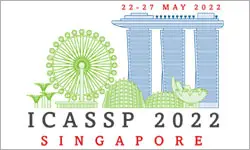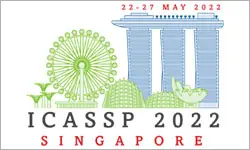GOAL-ORIENTED COMMUNICATION FOR EDGE LEARNING BASED ON THE INFORMATION BOTTLENECK
Francesco Pezone, Sergio Barbarossa, Paolo Di Lorenzo
-
Members: FreeSPS
IEEE Members: $11.00
Non-members: $15.00Length: 00:07:31
10 May 2022
Whenever communication takes place to fulfill a goal, an effective way to encode the source data to be transmitted is to use an encoding rule that allows the receiver to meet the requirements of the goal. A formal way to identify the relevant information with respect to a goal can be obtained exploiting the information bottleneck (IB) principle. In this paper, we propose a goal-oriented communication system, based on the combination of IB and stochastic optimization. The IB principle is used to design the encoder in order to find an optimal balance between representation complexity and relevance of the encoded data with respect to the goal. Stochastic optimization is then used to adapt the parameters of the IB to find an efficient resource allocation of communication and computation resources. Our goal is to minimize the average energy consumption under constraints on average service delay and accuracy of the learning task applied to the received data in a dynamic scenario. Numerical results assess the performance of the proposed strategy in two cases: regression from Gaussian random variables, where we can exploit closed-form solutions, and image classification using deep neural networks, with adaptive network splitting between transmit and receive sides.



